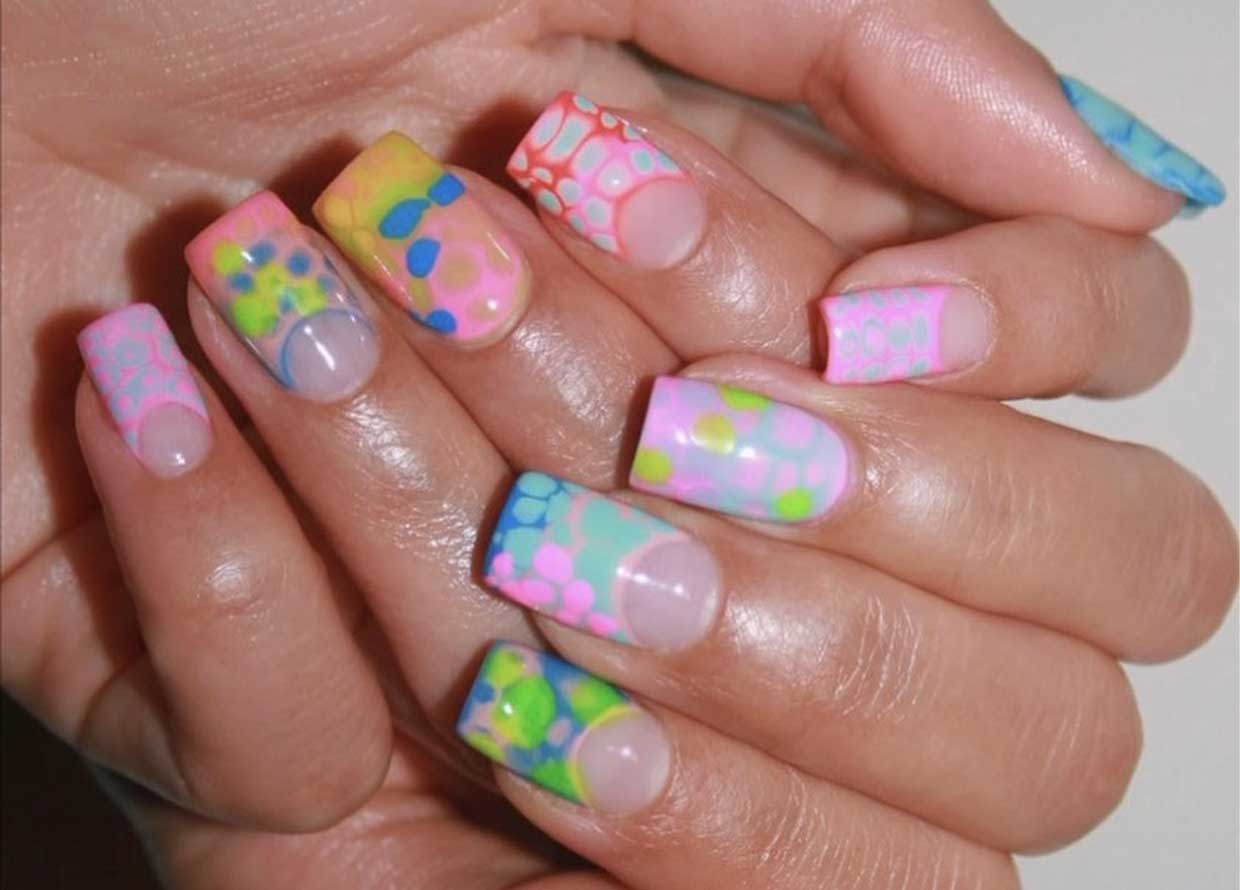The shocking reason you should stop getting gel and acrylic nails
New fear unlocked

Your pretty nails could ruin your life—here’s how an incurable acrylate allergy could prevent you from getting life-saving treatments down the line.
Most of TikTok’s breaking beauty news is little more than clean beauty fearmongering, but this latest headline actually had us scared—for good reason. Dr Zachary Rubin, a board-certified pediatric allergist and clinical immunologist, recently dropped a beauty bomb that went viral on the app.
Essentially, if you’re partial to at-home DIY manicures or dodgy salons, your gel and acrylic nails could give you some devastating health problems. You can watch his recap of said medical issues here:
@rubin_allergy Gel nails, if done improperly, can lead to an acrylate allergy that can be lifelong. #allergies #gelnails #tiktokdoc #learnontiktok
READ: Manicure 101: All you need to know before getting acrylic nails
It’s an incredibly insightful watch, but there is a lot of info in there, so for your convenience, here’s the TL;DR from Dr Rubin’s video:
What are acrylates, and what do they have to do with my manicure?
Acrylate monomers are found in gel, dip and shellac nail polishes, and are the key ingredient to the long-lasting, chip- and scratch-resistant finish many nail enthusiasts covet. In the video, Dr Rubin elaborates that “gel nails are made by applying an acrylate-based nail polish that includes a base coat, two coats of colour and a top coat which are each exposed either to an LED or a UVA light source to cause polymerisation.”
How does an acrylate allergy develop?
According to Dr Rubin, an acrylate allergy usually occurs when the immune system is exposed to the acrylate monomers that accidentally get on the skin. When the monomers come into contact with your skin, especially if your skin is broken or wounded, the immune system becomes sensitised to the acrylate. In the context of a manicure, monomers may remain on the skin if the light source used for polymerisation is not used correctly and the acrylates in your gel polish are not properly set.
Of course, there isn’t just one singular acrylate to be concerned about—as of today, many acrylate nail allergens have been identified, and one of the most common is called 2-hydroxyethyl methacrylate, also known as hema.
View this post on Instagram
How can you tell if you have an acrylate allergy?
It’s actually pretty easy to tell. Dr Rubin explains that people who become allergic to acrylates can present with different patterns or rashes: “While most people have rashes on their hands, fingers and wrists, up to 10 per cent may only have a rash on their face or neck. Sometimes the rash may be present on the abdomen or thighs as well.”
“An acrylate allergy is diagnosed by performing a patch test where the suspected chemical is placed on the back and held there with a patch for several days. A rash would result if there was an acrylate allergy.”
Why is an acrylate allergy so bad?
Firstly, acrylates are everywhere—from dental and orthopaedic procedures to surgical glues and wound dressings to contact lenses and even eyelash and hair extensions too. Secondly, once you develop an acrylate allergy, it’s incurable and excruciating. The original content creator, Alina Gene, describes her allergy flare-ups as a “burning, fiery pain in my joints”. She goes on to explain that she has since developed an allergy to all types of acrylates, which has subjected her to “a lifetime of chronic, untreatable pain”. She also asserts that, as a result of her allergy, she is not eligible for dental fillings, hip replacements and other potentially life-saving treatments. It’s not a small matter that will resolve. We reiterate: Acrylate allergies cannot be cured.
View this post on Instagram
How can I prevent getting an acrylate allergy?
1. Don’t get your nails done if you have a rash or skin damage near your nails
Dr Rubin stresses that you should avoid getting a gel manicure when you have a rash or broken skin. “This makes it easier for your immune system to see acrylate and become potentially sensitised to it”.
2. Avoid DIY gel nail kits
Doing your nails yourself increases your risk of being exposed to acrylates because you cannot guarantee that you’re not mishandling the materials. Instead, stick with a nail technician who knows what they’re doing.
3. Use traditional nail polish (or hema-free nail polish) if you’re going to DIY your manicure
Traditional polish may not be as resilient as gel, but we’d argue that a few prematurely-chipped nails are worth risking over developing an acrylate allergy.
4. Use nitrile gloves when working with acrylates
“Nitrile gloves provide better protection against acrylate compared to latex or vinyl gloves,” says Dr Rubin.
5. If you’re going to keep on with the manicures, make sure you use protection
What protection, you ask? Sunscreen on your hands and a peelable latex barrier around your cuticles, according to cosmetic chemist Javon Ford. It’s a no-brainer—the latex barrier can help to reduce the exposure of your skin to acrylate monomers, and the sunscreen will help protect your skin against UV damage (yes, the UV and LED lamps used to cure your manicures do emit UV-A radiation!).
For more beauty stories like this, click here.
| SHARE THE STORY | |
| Explore More |



